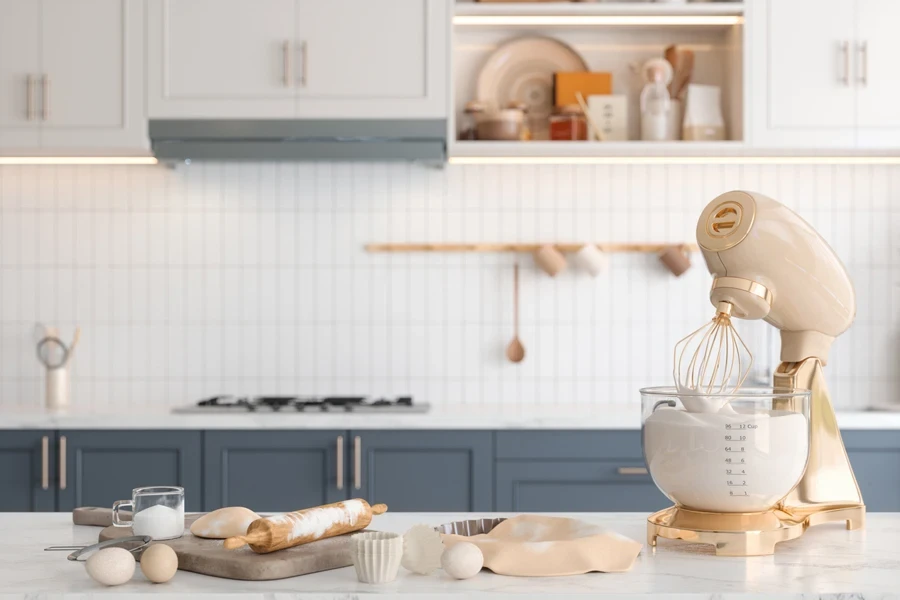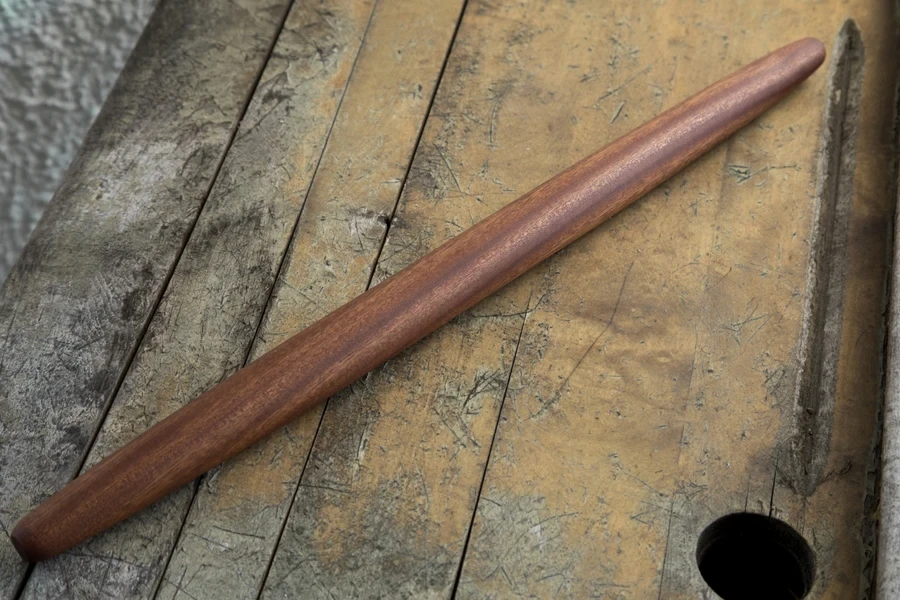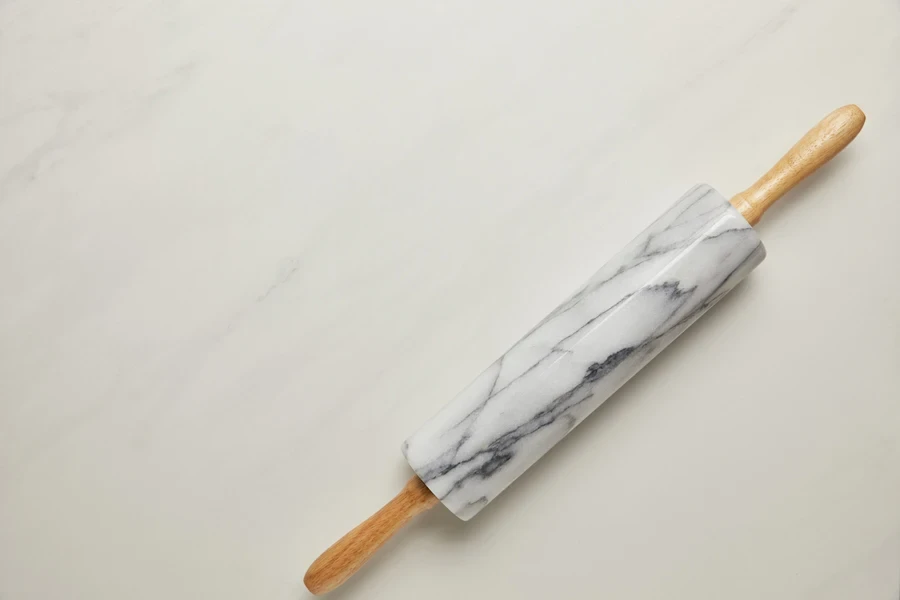It’s easy to assume rolling pins are just basic baking tools and stock a batch of wooden ones, but the truth is that rolling pins have a lot more going for them. Some consumers may come in looking for French rolling pins, and you’ll quickly realize that stocking a bunch of wooden rolling pins is not a great strategy.
Retailers looking to add rolling pins to their lineup should not dismiss them as simple products. Instead, they should examine them closely to determine what to consider when stocking them. Keep reading to learn why rolling pins are worth selling and how to choose them in 2025.
Table of Contents
Why rolling pins could become a sleeper hit
Rolling pins: 3 things to look at before stocking them
1. Handle vs. no handle
2. Material: Wood, marble, metal, and more
3. Sizes and weights
Merchandising and cross-selling tips to remember
Rolling out the final thoughts
Why rolling pins could become a sleeper hit

When people think about baking, they usually imagine flour-dusted counters and maybe a cake mixer. Rolling pins often feel like an afterthought until consumers need one. That’s when they suddenly realize how crucial they are for everything from pie crusts to homemade pizza dough.
Because they’re so essential, rolling pins can be more than just a “one-off” item. If retailers position them well near flour, baking sheets, or the store’s display of baking mixes, they can attract regular bakers and become a quick add-on sale.
On top of that, rolling pins have that nostalgic charm. Customers often talk about how their grandparents used an old wooden roller for everything. There’s a built-in emotional tie here—so if you emphasize quality or tradition in product descriptions, retailers might trigger happy memories and impulse buys.
Beyond that, rolling pins also have impressive market demand. They started 2025 with 165,000 searches, a 20% uptick from an average of 135,000 in 2024. It shows that new and experienced bakers always search for their perfect rolling pin.
Rolling pins: 3 things to look at before stocking them
1. Handle vs. no handle

Handled rolling pins versus handleless ones (often referred to as “French” or “rod” pins) are the first big thing retailers must consider. If businesses have a store in a neighborhood with many home bakers, they’d be surprised how adamant some people are about this choice.
Handled rolling pins look like what Grandma had—a wooden cylinder in the middle and two handles that help it rotate. They’re comfortable for folks who prefer a firm grip and expect the barrel to do the spinning. Handled rolling pins are also the go-to for casual bakers or beginners because they feel familiar.
On the other hand, French or rod pins usually consist of a single piece of wood, sometimes slightly tapered at the ends. Serious bakers and pastry pros often swear by them for better dough control. They’ll say things like, “I can feel how thick the dough is better,” or “It’s easier to apply even pressure.” Having these in stock is a good idea if retailers serve a more culinary-savvy crowd—or even a local pastry school.
2. Material: Wood, marble, metal, and more

Rolling pins also come in other materials beyond wood. Here’s a closer look at the rolling pin materials you can stock:
- Wood is the classic and cozy option (like maple or beech). It’s what most people grew up seeing. Wood feels warm in the hand and can handle a dusting of flour without getting slick. On the flip side, it’s not dishwasher-safe and may need some oiling over time to prevent cracking.
- Marble may make many skeptical about carrying something so heavy. But marble rolling pins have a real following. They stay cool, which helps keep dough from warming up too fast (a plus for pie crusts or puff pastry).
However, marble requires careful handling; if consumers drop one, it could chip or crack. Nevertheless, marble can be a winner for a more upscale client or gift-giving (it looks fancy in a nice box!).
- Metal (stainless steel or aluminum) is the modern option. Consumers love it because it is easy to clean, and some even allow you to add cold water inside to keep the surface chilled. While metal may not sell as much as wood or marble, those who buy it are usually serious about controlling dough temperature or want something super easy to sanitize.
- Silicone/nonstick-coated pins are perfect for anyone who hates the idea of dough sticking. People new to baking or those short on patience will see these pins as lifesavers. The trade-off is that they may not look as classic, and if the coating is not high-quality, it could wear off after a few years.
3. Sizes and weights

Rolling pins also come in many lengths. A standard pin might be around 16 inches (ca. 41 cm), but retailers can easily find 2 inches (mini, ca. 5 cm) or up to 20+ inches (great for large pastry sheets). Here’s a closer look:
- Short pins: These sizes are handy for rolling small batches, tortillas, or teaching kids to bake. Consumers in cramped kitchens can also use them easily.
- Long pins are ideal for large cookie batches or pizzas. However, some people prefer the comfort of extra rolling space, especially for large holiday baking projects.
Pro tip: Label the length in your displays or product descriptions. Customers want that info at a glance; it helps them determine if it’ll fit their countertop or the dough size they typically roll out.
Consider stocking rolling pins in the 3- to 5-pound weight range. That’s the sweet spot for most baking tasks, as the weight allows for easy smoothing of dough without too much pressure. This weight range also helps with control so consumers can enjoy a more efficient and less tiring rolling process.
Merchandising and cross-selling tips to remember

One trick that’s worked well is positioning rolling pins near other baking tools, like cookie cutters, pastry boards, or measuring cups. It gives shoppers the feeling that they can get all their baking gear in one spot.
Suppose retailers also sell decorative cake stands. They can create a mini “baking corner” that suggests a whole dessert-baking experience, from rolling dough to displaying the final masterpiece.
If you primarily sell online, don’t skimp on picture quality. Let the photos and description answer easy consumer questions like “How long is this pin?” or “Is this tapered or straight?” upfront. If you can, show a photo of someone rolling out dough with the product—added context can make a big difference.
Rolling out the final thoughts
Stocking rolling pins seems like a small part of running a retail operation. But they can add depth to your kitchen or home goods section—especially if you carry a thoughtful mix that caters to different baking styles and budgets.
Take a moment to consider your clientele. Do they want straightforward, affordable products or appreciate artisanal craftsmanship and unique materials? Once you know that, it’s just a matter of adding clear descriptions, eye-catching displays, and maybe a sprinkling of cross-merchandising magic to help these rolling pins find happy homes in your customers’ kitchens.




